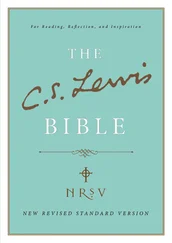Standard Template Library Programmer's Guide
Здесь есть возможность читать онлайн «Standard Template Library Programmer's Guide» весь текст электронной книги совершенно бесплатно (целиком полную версию без сокращений). В некоторых случаях можно слушать аудио, скачать через торрент в формате fb2 и присутствует краткое содержание. Жанр: Программирование, Справочники, на английском языке. Описание произведения, (предисловие) а так же отзывы посетителей доступны на портале библиотеки ЛибКат.
- Название:Standard Template Library Programmer's Guide
- Автор:
- Жанр:
- Год:неизвестен
- ISBN:нет данных
- Рейтинг книги:4 / 5. Голосов: 1
-
Избранное:Добавить в избранное
- Отзывы:
-
Ваша оценка:
- 80
- 1
- 2
- 3
- 4
- 5
Standard Template Library Programmer's Guide: краткое содержание, описание и аннотация
Предлагаем к чтению аннотацию, описание, краткое содержание или предисловие (зависит от того, что написал сам автор книги «Standard Template Library Programmer's Guide»). Если вы не нашли необходимую информацию о книге — напишите в комментариях, мы постараемся отыскать её.
Standard Template Library Programmer's Guide — читать онлайн бесплатно полную книгу (весь текст) целиком
Ниже представлен текст книги, разбитый по страницам. Система сохранения места последней прочитанной страницы, позволяет с удобством читать онлайн бесплатно книгу «Standard Template Library Programmer's Guide», без необходимости каждый раз заново искать на чём Вы остановились. Поставьте закладку, и сможете в любой момент перейти на страницу, на которой закончили чтение.
Интервал:
Закладка:
• n is an integral type.
• n >= 0 .
The number of multiplications (or, in the case of the second version, the number of applications of MonoidOperation ) is lg(n) + nu(n) where lg is the base 2 logarithm and nu(n) is the number of 1 s in the binary representation of n . [3]
int main() {
cout << "2 ** 30 = " << power(2, 30) << endl;
}
[1] This is a conceptual description of what power 's return value is; it is not how power is actually implemented. If power were implemented that way then it would require n-1 multiplications, which would be grossly inefficient. Power is implemented using the "Russian peasant algorithm", which requires only O(log n) multiplications. See section 4.6.3 of Knuth (D. E. Knuth, The Art of Computer Programming. Volume 2: Seminumerical Algorithms , Addison-Wesley, 1981) for a discussion.
[2] See the Monoid Operation requirements for a discussion of associativity.
[3] This is in fact not the minimum possible number of multiplications: it is possible to compute the fifteenth power of x using only five multiplications, but power(x, 15) uses six.
Monoid Operation, multiplies , plus
Function Objects
Introduction
Category: functors
Component type: overview
A Function Object , or Functor (the two terms are synonymous) is simply any object that can be called as if it is a function. An ordinary function is a function object, and so is a function pointer; more generally, so is an object of a class that defines operator() .
The basic function object concepts are Generator, Unary Function, and Binary Function: these describe, respectively, objects that can be called as f() , f(x) , and f(x,y) . (This list could obviously be extended to ternary function and beyond, but, in practice, no STL algorithms require function objects of more than two arguments.) All other function object concepts defined by the STL are refinements of these three.
Function objects that return bool are an important special case. A Unary Function whose return type is bool is called a Predicate, and a Binary Function whose return type is bool is called a Binary Predicate.
There is an important distinction, but a somewhat subtle one, between function objects and adaptable function objects . [1] In general, a function object has restrictions on the type of its argument. The type restrictions need not be simple, though: operator() may be overloaded, or may be a member template, or both. Similarly, there need be no way for a program to determine what those restrictions are. An adaptable function object, however, does specify what the argument and return types are, and provides nested typedef s so that those types can be named and used in programs. If a type F0 is a model of Adaptable Generator, then it must define F0::result_type . Similarly, if F1 is a model of Adaptable Unary Function then it must define F1::argument_type and F1::result_type , and if F2 is a model of Adaptable Binary Function then it must define F2::first_argument_type , F2::second_argument_type , and F2::result_type . The STL provides base classes unary_function and binary_function to simplify the definition of Adaptable Unary Functions and Adaptable Binary Functions. [2]
Adaptable function objects are important because they can be used by function object adaptors : function objects that transform or manipulate other function objects. The STL provides many different function object adaptors, including unary_negate (which returns the logical complement of the value returned by a particular AdaptablePredicate), and unary_compose and binary_compose , which perform composition of function object.
Finally, the STL includes many different predefined function objects, including arithmetic operations ( plus , minus , multiplies , divides , modulus , and negate ), comparisons ( equal_to , not_equal_to, greater , less , greater_equal , and less_equal ), and logical operations ( logical_and , logical_or , and logical_not ). It is possible to perform very sophisticated operations without actually writing a new function object, simply by combining predefined function objects and function object adaptors.
Fill a vector with random numbers. In this example, the function object is simply a function pointer.
vector V(100);
generate(V.begin(), V.end(), rand);
Sort a vector of double by magnitude, i.e. ignoring the elements' signs. In this example, the function object is an object of a user-defined class.
struct less_mag : public binary_function {
bool operator()(double x, double y) { return fabs(x) < fabs(y); }
};
vector V;
…
sort(V.begin(), V.end(), less_mag());
Find the sum of elements in a vector . In this example, the function object is of a user-defined class that has local state.
struct adder : public unary_function {
adder() : sum(0) {}
double sum;
void operator()(double x) { sum += x; }
};
vector V;
…
adder result = for_each(V.begin(), V.end(), adder()); [3]
cout << "The sum is " << result.sum << endl;
Remove all elements from a list that are greater than 100 and less than 1000.
list L;
…
list::iterator new_end = remove_if(L.begin(), L.end(), compose2(logical_and(), bind2nd(greater(), 100), bind2nd(less(), 1000)));
L.erase(new_end, L.end());
• Generator
• Unary Function
• Binary Function
• Predicate
• Binary Predicate
• Adaptable Generator
• Adaptable Unary Function
• Adaptable Binary Function
• Adaptable Predicate
• Adaptable Binary Predicate
• plus
• minus
• multiplies(formerly called times )
• divides
• modulus
• negate
• equal_to
• not_equal_to
• greater
• less
• greater_equal
Интервал:
Закладка:
Похожие книги на «Standard Template Library Programmer's Guide»
Представляем Вашему вниманию похожие книги на «Standard Template Library Programmer's Guide» списком для выбора. Мы отобрали схожую по названию и смыслу литературу в надежде предоставить читателям больше вариантов отыскать новые, интересные, ещё непрочитанные произведения.
Обсуждение, отзывы о книге «Standard Template Library Programmer's Guide» и просто собственные мнения читателей. Оставьте ваши комментарии, напишите, что Вы думаете о произведении, его смысле или главных героях. Укажите что конкретно понравилось, а что нет, и почему Вы так считаете.











